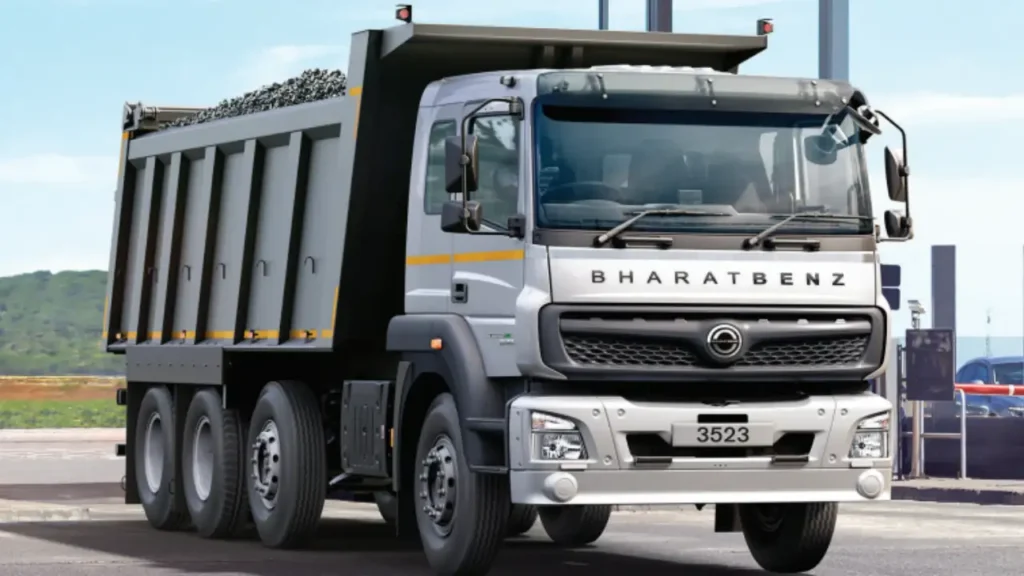In a move that is expected to shake up the commercial vehicle market in India, BharatBenz, the well-known manufacturer of heavy-duty trucks and buses, has announced that it will be increasing the prices of its vehicles across its entire range. This price hike will affect various models, from light-duty trucks to large freight carriers and buses, impacting fleet owners, operators, and businesses reliant on these vehicles for transportation and logistics.
The decision to raise prices is not one that BharatBenz has taken lightly, but it reflects the broader economic and market forces currently at play. Let’s dive into the reasons behind this price surge, the effects on the trucking industry, and what consumers can expect moving forward.
Why Are BharatBenz Vehicles Becoming Costlier?
The rising cost of BharatBenz vehicles can be attributed to several factors that have been affecting the automotive sector, particularly the commercial vehicle segment, in recent months.
1. Increased Raw Material Costs
One of the primary reasons for the price increase is the significant rise in raw material costs. The manufacturing of commercial vehicles involves essential materials like steel, aluminum, rubber, and plastics, which have seen sharp price hikes due to global supply chain disruptions. These materials form the backbone of vehicle production, and as their prices soar, manufacturers like BharatBenz are left with no choice but to adjust vehicle prices to maintain profitability.
2. Regulatory Changes and Emission Norms
The Indian government’s push toward greener transportation solutions has led to stricter emission norms, including the transition to Bharat Stage VI (BS-VI) standards. This shift has forced manufacturers to invest heavily in advanced technologies to meet the new standards. BharatBenz, known for its commitment to sustainable practices, has integrated cutting-edge technologies in its vehicles to reduce carbon emissions and improve fuel efficiency. However, this technological overhaul comes at a higher production cost, which has been reflected in the new pricing.
3. Rising Fuel and Operating Costs
Another factor influencing the price surge is the rising cost of fuel and operating expenses. Fuel prices in India have been volatile, and higher fuel costs not only affect the operational cost of commercial vehicles but also increase the cost of manufacturing and transportation. Additionally, inflation and increases in labor and logistics costs have further strained the financials of automakers, prompting price adjustments across the board.
4. Supply Chain Disruptions
The global supply chain challenges, particularly in the automotive sector, have had a ripple effect on vehicle production. Shortages of critical components, such as semiconductor chips, have delayed production timelines and raised manufacturing costs. Given that BharatBenz, like other vehicle manufacturers, relies on complex supply chains for sourcing components, any disruptions can lead to a rise in vehicle prices.

Impact on the Commercial Vehicle Sector
For the commercial vehicle industry, BharatBenz’s price hike is part of a broader trend. Many manufacturers in the sector are facing similar pressures to raise prices, as the costs associated with manufacturing and operating vehicles have risen substantially. The immediate impact of these price hikes is likely to be felt most acutely by fleet owners and operators, especially small and medium-sized businesses that rely heavily on cost-effective solutions.
While the initial cost of purchasing BharatBenz vehicles will increase, it’s important to recognize the long-term value they provide. BharatBenz vehicles are renowned for their durability, low maintenance costs, and fuel efficiency. Despite the price hike, these long-term benefits may continue to make BharatBenz an attractive option for businesses focused on cost optimization and operational efficiency.
Shifting Market Dynamics
The price increase may also shift market dynamics, leading businesses to consider alternative brands and options. However, given BharatBenz’s strong reputation for quality and reliability, many fleet operators may choose to absorb the cost increase, viewing it as a necessary investment in long-term business growth.
What Consumers Can Expect
For current and potential customers of BharatBenz vehicles, the price rise signals a need to rethink their vehicle purchasing strategy. While fleet owners might hesitate due to the increased upfront costs, they must also consider the total cost of ownership, which includes factors such as fuel efficiency, resale value, and maintenance costs. BharatBenz vehicles, while costlier initially, often prove to be a more economical choice in the long run, thanks to their advanced technologies, superior performance, and longevity.
Additionally, BharatBenz’s focus on providing excellent after-sales service, along with a robust network of service centers, adds value to the ownership experience. These factors could make the price increase more palatable for customers who prioritize the total cost of ownership over the immediate purchase price.
Conclusion
BharatBenz’s decision to raise vehicle prices is a direct response to the challenges posed by rising raw material costs, regulatory changes, supply chain disruptions, and the increasing cost of operations. While the price hike may put a strain on businesses in the short term, it’s important to recognize the long-term value of investing in BharatBenz vehicles. Their reputation for durability, fuel efficiency, and low maintenance costs continues to make them a preferred choice for many fleet operators.
For consumers, the key will be to focus on the total cost of ownership and the long-term benefits of these commercial vehicles, ensuring that their investment remains cost-effective and competitive in a rapidly changing market. As the industry evolves, BharatBenz’s focus on innovation and sustainability will likely continue to position it as a leading player in the Indian commercial vehicle sector.







